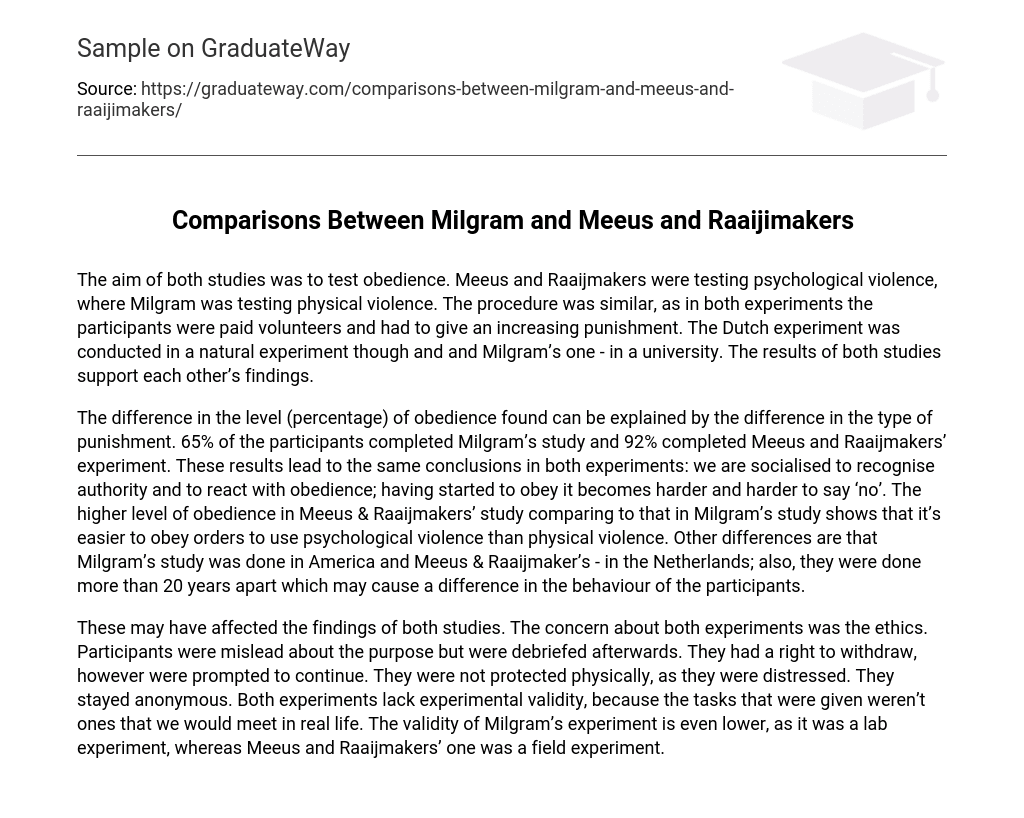The aim of both studies was to test obedience. Meeus and Raaijmakers were testing psychological violence, where Milgram was testing physical violence. The procedure was similar, as in both experiments the participants were paid volunteers and had to give an increasing punishment. The Dutch experiment was conducted in a natural experiment though and and Milgram’s one – in a university. The results of both studies support each other’s findings.
The difference in the level (percentage) of obedience found can be explained by the difference in the type of punishment. 65% of the participants completed Milgram’s study and 92% completed Meeus and Raaijmakers’ experiment. These results lead to the same conclusions in both experiments: we are socialised to recognise authority and to react with obedience; having started to obey it becomes harder and harder to say ‘no’. The higher level of obedience in Meeus & Raaijmakers’ study comparing to that in Milgram’s study shows that it’s easier to obey orders to use psychological violence than physical violence. Other differences are that Milgram’s study was done in America and Meeus & Raaijmaker’s – in the Netherlands; also, they were done more than 20 years apart which may cause a difference in the behaviour of the participants.
These may have affected the findings of both studies. The concern about both experiments was the ethics. Participants were mislead about the purpose but were debriefed afterwards. They had a right to withdraw, however were prompted to continue. They were not protected physically, as they were distressed. They stayed anonymous. Both experiments lack experimental validity, because the tasks that were given weren’t ones that we would meet in real life. The validity of Milgram’s experiment is even lower, as it was a lab experiment, whereas Meeus and Raaijmakers’ one was a field experiment.





